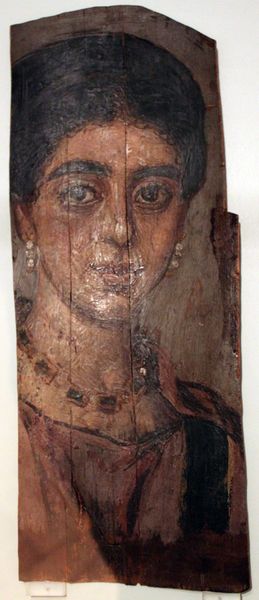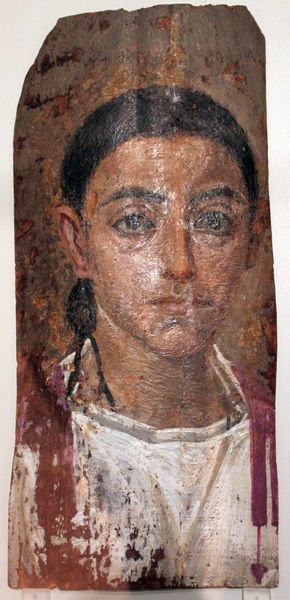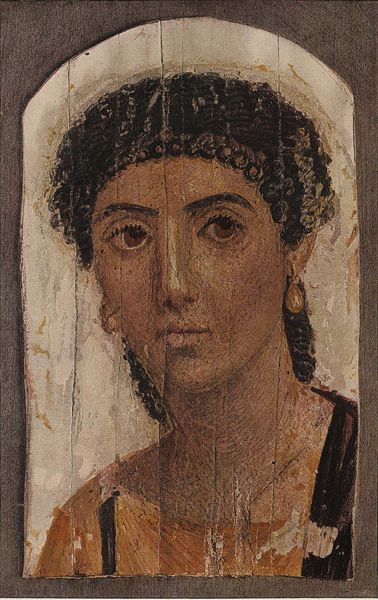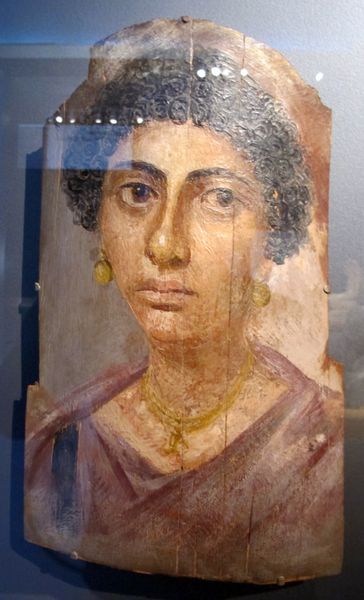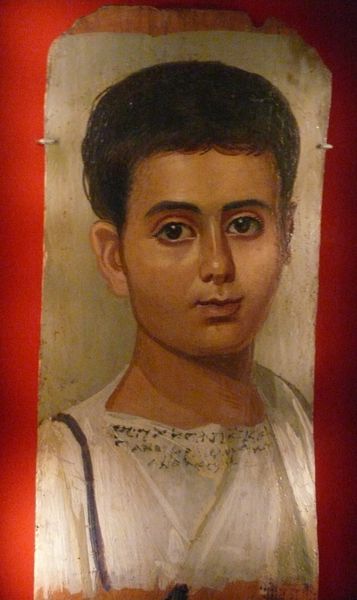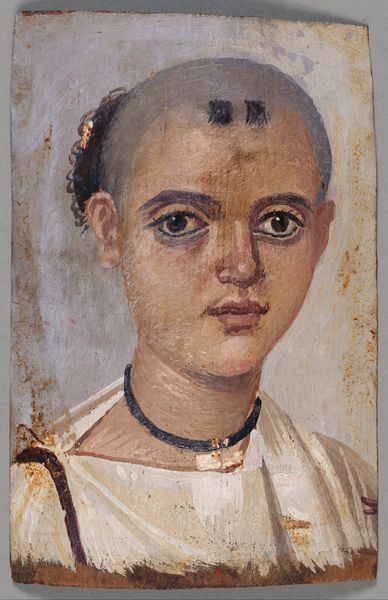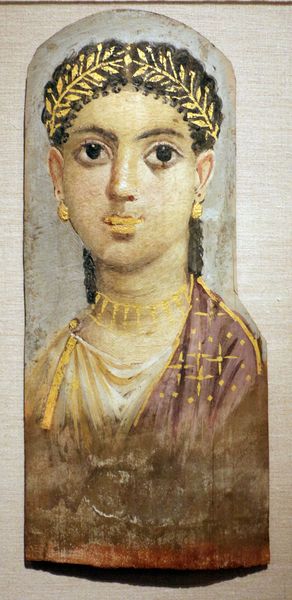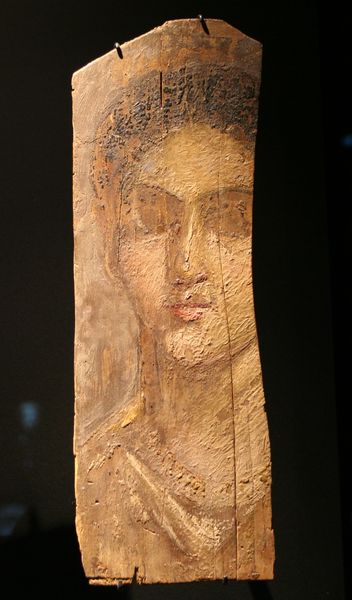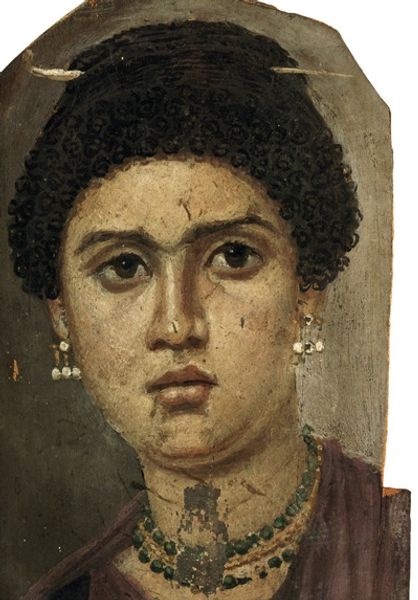
tempera, painting
#
portrait
#
tempera
#
painting
#
ancient-egyptian-art
#
figuration
#
oil painting
#
ancient-mediterranean
#
realism
Copyright: Public domain
This Fayum mummy portrait, likely from the 1st or 2nd century CE, presents a painted likeness on wood. Its most immediate quality is the direct gaze of the subject; large, dark eyes dominate the composition, creating a sense of arresting presence. The artist employs a limited palette – primarily earthy tones and muted whites – to render the young man's features and clothing. We see a sensitive modulation of light and shadow which gives the face a subtle three-dimensionality, while the garment is indicated with broad strokes and simple lines. The wooden support is visible in many places, which reminds us of the materiality of the piece. The Fayum portraits are fascinating in their blend of Egyptian funerary customs and Roman artistic conventions. The directness of the portrait suggests a desire to capture the individual essence of the deceased, but does this also create a dialogue between the living and the dead? This emphasis on individual identity, combined with its function in the afterlife, creates a powerful tension. It’s an early example of how portraiture can engage with questions of representation, identity, and mortality.
Comments
No comments
Be the first to comment and join the conversation on the ultimate creative platform.
